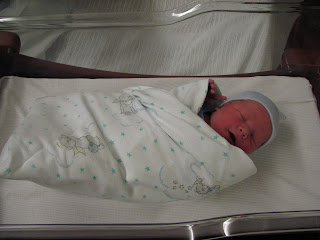The man who slaughters and butchers the hog is called a
norcino. He's very respected. This is a hobby and a source of (little) extra income, not a full time job.
So, how do you slaughter and butcher a hog, then make sausage?
First you shoot it through the forehead. At this point the hog is dead, he's not feeling anything, but there are plenty of death throes left, so you quickly slit the throat, then get out of the way as it flops about.

After the hog
stops moving, spray it off as best as you can with a hose. It may still twitch, especially when you flip it over and the blood that has pooled flows into muscles.

Next, load it up on a table and start taking the bristles off. You do this by pouring boiling water over the hog and scrapping the skin with a knife.


The boiling water and scraping cleans the hog very well, but you must ensure everything is clean, including scrubbing between the toes. food poisoning sucks.
Once the hog is cleaned, it's time to take off the head.

One of the
norcinos will take the head away and continue cleaning it. It's a lot of work.

Now it's time to hang the hog. Ropes tied to the leg can easily slip off, so you suspend him using the
Achilles tendons.

No need for a winch, just a little ingenuity.


The last bristles are burned off using a propane torch. Also helps in preventing contamination.

Next, gut the hog.

Then place it on a table and start butchering. The feet are cut off.

The tenderloins are removed. Then the spine, ribs and pelvis are cut away, leaving the ham, shoulder butt, picnic ham, belly and loin till attached to the skin.

The meat is trimmed, saving all the scraps for sausage. The ham is saved for either
prosciutto, or in this case
deboned and the outside reserved for
speck. The belly becomes
panchetta, the top of the shoulder
coppa. These reserved pieces are salted, seasoned, and set aside to begin curing.

The rest of the meat is ground, along with fat, for sausage. There are 3 grinds. The hock and the liver become
figadel, the shoulder, picnic ham, and back fat; along with any white meat scraps, become
lugauegoand
soppressa. The skin and gristle become
mussette. The ground meat is seasoned and
kneaded by hand until the correct consistency is achieved.

Pack the stuffer and begin stuffing sausage.

The
norcino ties off the sausage and pricks the casing to release air and water.

After the sausage is made, the
norcino rolls and ties the
pancetta and
coppa. The
speck will be smoked later.
Here's the result, minus 12 fresh sausages that were cooked that day. The hog was 190 kilos.

 Basically, if Teflon is heated to over 600° F it
Basically, if Teflon is heated to over 600° F it  The cast iron will not have a good patina yet. That will develop over time. The key is not damaging the patina you do have. Only wash with hot water. Scrub stuck bits off, but do not be too
The cast iron will not have a good patina yet. That will develop over time. The key is not damaging the patina you do have. Only wash with hot water. Scrub stuck bits off, but do not be too  One hint: Clean cast iron after cooking while it is still hot. Everything comes off much easier.
One hint: Clean cast iron after cooking while it is still hot. Everything comes off much easier.


 After the hog
After the hog  Next, load it up on a table and start taking the bristles off. You do this by pouring boiling water over the hog and scrapping the skin with a knife.
Next, load it up on a table and start taking the bristles off. You do this by pouring boiling water over the hog and scrapping the skin with a knife.
 The boiling water and scraping cleans the hog very well, but you must ensure everything is clean, including scrubbing between the toes. food poisoning sucks.
The boiling water and scraping cleans the hog very well, but you must ensure everything is clean, including scrubbing between the toes. food poisoning sucks. One of the
One of the  Now it's time to hang the hog. Ropes tied to the leg can easily slip off, so you suspend him using the
Now it's time to hang the hog. Ropes tied to the leg can easily slip off, so you suspend him using the  No need for a winch, just a little ingenuity.
No need for a winch, just a little ingenuity.

 Next, gut the hog.
Next, gut the hog. Then place it on a table and start butchering. The feet are cut off.
Then place it on a table and start butchering. The feet are cut off. The tenderloins are removed. Then the spine, ribs and pelvis are cut away, leaving the ham, shoulder butt, picnic ham, belly and loin till attached to the skin.
The tenderloins are removed. Then the spine, ribs and pelvis are cut away, leaving the ham, shoulder butt, picnic ham, belly and loin till attached to the skin.
 The rest of the meat is ground, along with fat, for sausage. There are 3 grinds. The hock and the liver become
The rest of the meat is ground, along with fat, for sausage. There are 3 grinds. The hock and the liver become  Pack the stuffer and begin stuffing sausage.
Pack the stuffer and begin stuffing sausage. The
The  After the sausage is made, the
After the sausage is made, the 



 It's full of
It's full of 
